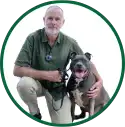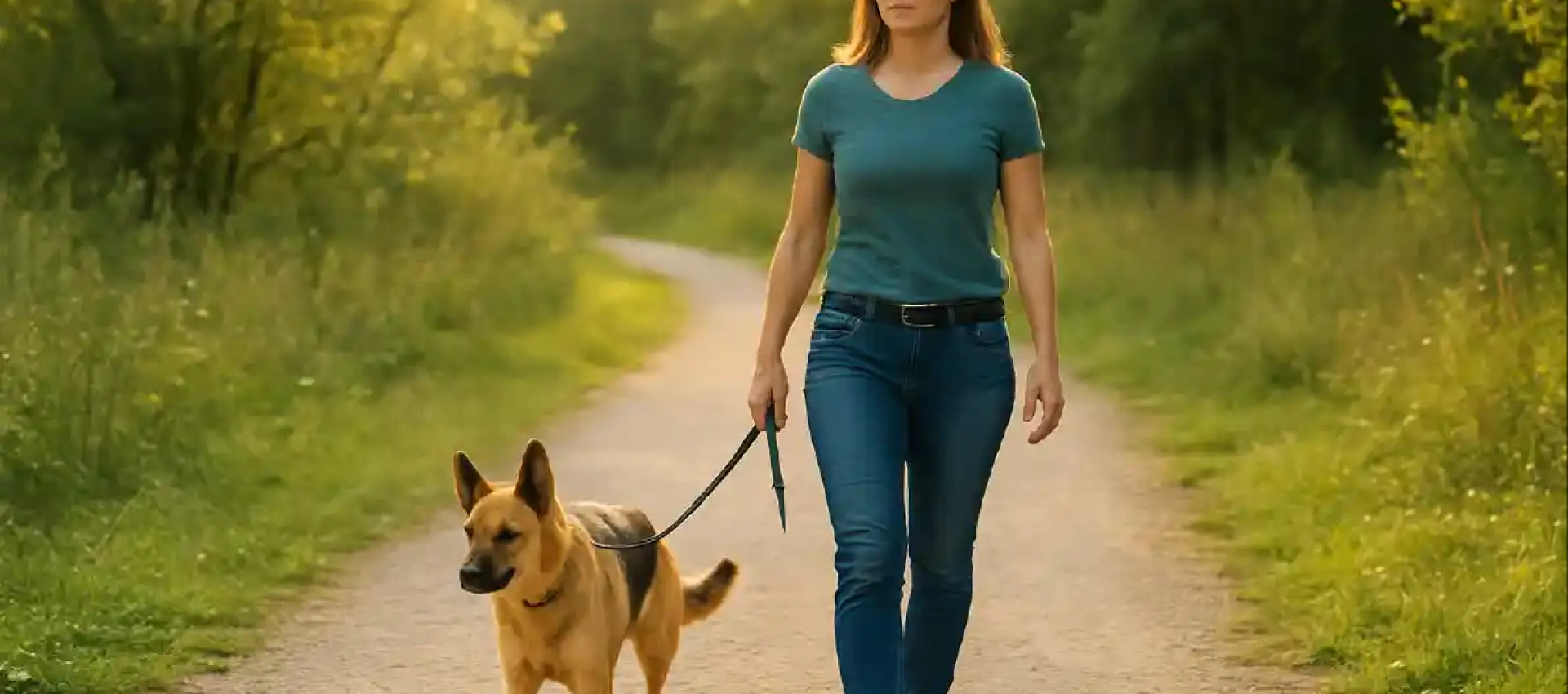Why Viewing Your Dog’s Behaviour Through an Emotional Lens Limits Your Ability to Help
When we view our dog’s behaviour through emotion rather than objective observation, we unintentionally limit how much we can truly help them.
Feelings like guilt, fear, or sympathy can cloud judgment and pull our focus away from what the dog needs and toward how we feel.
Many owners become more worried about hurting their dog’s feelings than addressing the underlying issue. In reality, this often stems from their own emotional insecurities — a fear of causing discomfort or being perceived as unkind.
This feeling of appearing “unkind” is often reinforced by force-free and positive-only ideologies, which push the idea that any form of pressure or correction is harmful. The emotional messaging behind these movements (sometimes even deliberately guilt-driven) convinces owners that using balance, consequence, or structured pressure is cruel or outdated.
As a result, owners begin to feel guilt and hesitation — even when their instincts tell them their dog needs more structure and accountability.
This creates a form of cognitive dissonance — the mental conflict that arises when one’s natural understanding of how animals learn and survive clashes with the emotional narrative that discomfort or consequence equals cruelty. To ease this internal tension, many people suppress their instincts and default to emotional decision-making, even when it works against their dog’s best interests.
In doing so, they unknowingly project that emotional confusion onto their dogs, avoiding the very experiences — appropriate discomfort, clear boundaries, and fair guidance — that actually help a dog find balance, confidence, and calm.
Why Emotion-Driven Training Limits Growth
Over the last decade, positive-only and force-free training ideologies have become incredibly popular. They appeal to our emotions because they sound compassionate and humane — training through reward alone.
But these systems are often built on human emotion rather than an objective understanding of how animals learn and survive.
In nature, no species thrives on positive experiences alone. Every animal learns through a balance of both positive and negative consequences. That balance is what shapes behaviour, builds confidence, and ensures survival.
When we remove that balance in the name of “kindness,” we create an artificial version of reality that satisfies our emotions — but does little to help our dogs adapt or grow.
The Role of Discomfort in Learning
Discomfort is not cruelty — it’s one of nature’s greatest teachers. Every species learns to adapt and survive through experiences involving both reward and consequence.
Examples of Negative Reinforcement in Nature:
- An animal steps out of the hot sun into the cool shade — the discomfort of heat motivates the movement, and the relief reinforces it.
- A bird flies away from a loud predator call — escaping the threat brings relief.
- Fish move to safer depths when temperature or pressure changes become uncomfortable.
Examples of Positive Punishment in Nature:
- A porcupine’s quills teach a predator not to bite again.
- A bee sting discourages animals from attacking bees in the future.
- A dominant wolf corrects a pushy pack member with a growl or nip, maintaining harmony within the group.
These are not acts of cruelty — they’re essential feedback loops that shape behaviour and maintain balance.
What Would Happen If We Removed Them?
Imagine if humans could somehow erase all forms of negative reinforcement and positive punishment from the animal world.
Predators wouldn’t chase prey.
Prey wouldn’t learn to run from danger.
Boundaries within packs or herds would disappear.
Without pressure, consequence, or challenge, chaos would quickly follow — and life as we know it would collapse.
Discomfort and consequence drive adaptation. They teach resilience, awareness, and survival. Nature depends on them — and so do our dogs.
Even Humans Can’t Live in a Positive-Only, Force-Free World
This concept doesn’t just apply to animals — it applies to us, too. Humans depend on both positive and negative feedback to function as a society.
Traffic fines discourage reckless driving. Deadlines and consequences at work keep accountability in place. Laws and social boundaries maintain structure by defining what’s acceptable and what isn’t.
If we removed all consequences — if everyone could act without restraint, correction, or responsibility — society would collapse just like the animal world would. There would be no learning, no accountability, and no respect for boundaries.
The same principle applies to our dogs. Boundaries, pressure, and fair correction are not about punishment — they’re about teaching accountability and balance. Just as humans grow through challenge and consequence, so do our dogs.
What This Means for Dog Training
Helping your dog doesn’t mean being harsh; it means being balanced.
True communication involves both compassion and consequence. Reward builds trust and motivation, while fair correction and structured pressure teach understanding and self-control.
When we allow emotions to take over, we lose clarity. We start projecting our own discomfort onto the dog and make decisions that feel kind to us but often keep the dog stuck in confusion or insecurity.
The goal isn’t to remove discomfort — it’s to guide your dog through it calmly, fairly, and consistently. That’s how they build true confidence and trust.
The Takeaway
Training rooted in emotion often soothes the human more than it helps the dog.
But training rooted in balance — clear communication, appropriate pressure, and fair reward — mirrors the way both animals and humans naturally learn and thrive.
So next time you feel guilty about letting your dog face a challenge, remember:
Growth doesn’t happen in comfort.
In both nature and training, balance — not emotion — creates stability, confidence, and harmony.
© Mark Singer



